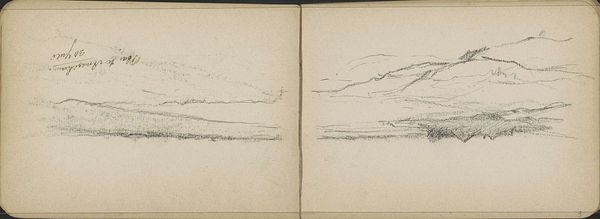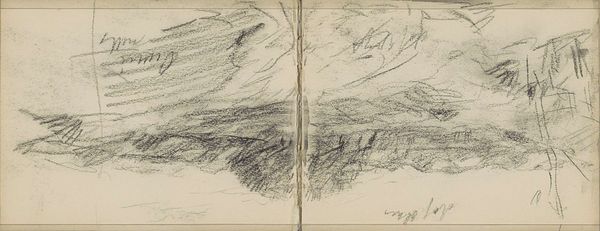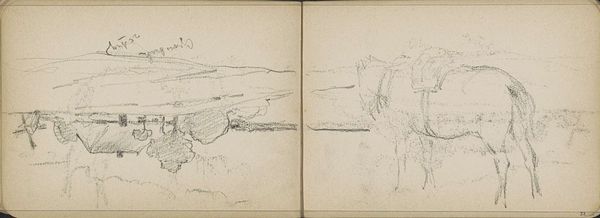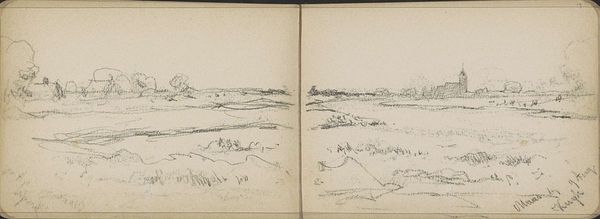
drawing, paper, pencil
#
drawing
#
impressionism
#
pencil sketch
#
landscape
#
paper
#
pencil
#
watercolor
Copyright: Rijks Museum: Open Domain
Anton Mauve sketched this landscape with a figure sometime before his death in 1888. The lone figure amidst the vast landscape is a motif resonating through centuries, symbolizing humankind's relationship with nature. Consider Caspar David Friedrich’s wanderer standing atop a mountain, contemplating the sublime. Similarly, Mauve's figure evokes themes of solitude, introspection, and the human spirit dwarfed by nature's grandeur. The figure, rendered minimally, allows viewers to project their feelings onto it, making it a vessel for emotional engagement. The motif speaks to a deep-seated longing for connection with the natural world, a yearning that has persisted through cultural and historical shifts. The landscape motif is not static but evolves, reflecting changing attitudes toward nature, from romantic idealization to ecological awareness. It reappears in art across time, each instance colored by the cultural context and the artist’s personal experiences, engaging us on a deeply psychological level.
Comments
No comments
Be the first to comment and join the conversation on the ultimate creative platform.













